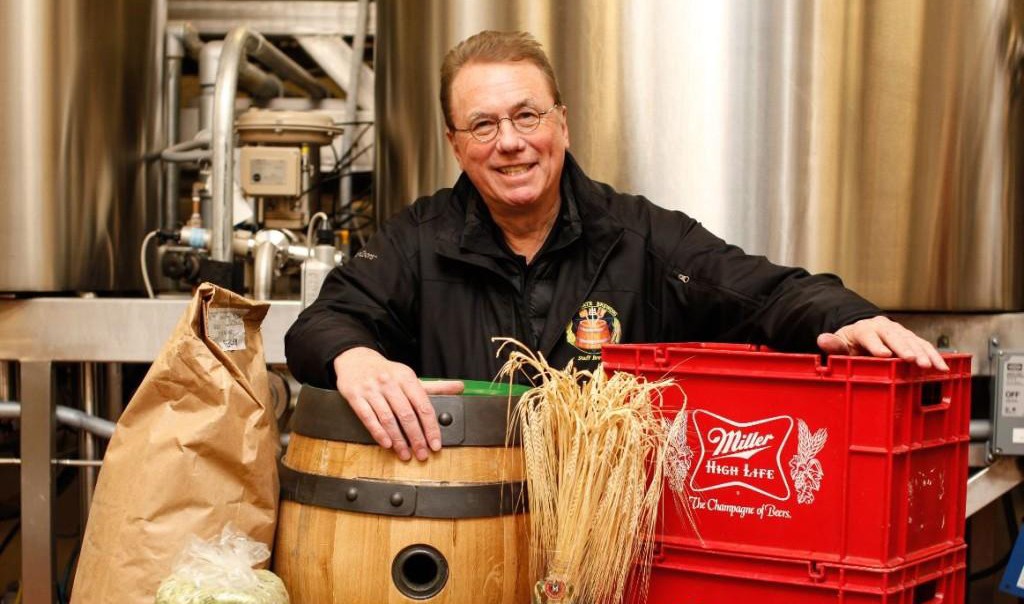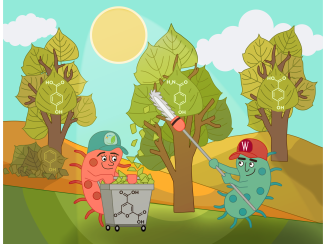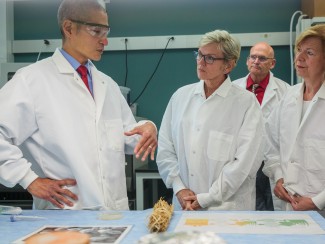
David Ryder recently shared with us his thoughts about serving as scientific advisor to the Great Lakes Bioenergy Research Center (GLBRC), the past eight years of GLBRC research, and the next decade of bioenergy advancements.
David Ryder knows his hops. As Miller Coors Vice President of Brewing and instructor of the famed University of Wisconsin-Madison course “Introduction to Brewing” Ryder’s two dozen years of experience in all things beer have given him a knowledge base few can rival.
Yet the veteran beer maker is always looking for the opportunity to learn more.
In 2007, Ryder drew on his affection for two great Wisconsin traditions – its historic university and its culture of brewing beer – to spearhead a partnership with UW–Madison’s College of Agricultural and Life Sciences. When Miller Coors (then Miller Brewing Company) invested $100,000 in a fermentation lab, Ryder met Tim Donohue, Director of the Great Lakes Bioenergy Research Center (GLBRC) and UW–Madison professor of bacteriology.
After discovering a shared love of microbes, Donohue invited Ryder to serve on the GLBRC Science Advisory Board. Since 2014, Ryder has chaired the board, helping to guide the Center’s research toward establishing a sustainable pipeline for biofuels.
GLBRC: How has curiosity and the eagerness to take on new things fed your work with GLBRC?
DR: I had a huge interest in biofuels before becoming involved with GLBRC, but didn’t know very much about it, just like my interest in brewing before working for Miller Brewing Company. I thought I knew so much about hops when I started out, but it wasn’t until I began working there that I found out the experts there had so much more knowledge than me. When I became a part of the GLBRC, I found out how much I really didn’t know about biofuels. I had to learn a lot in order to contribute.
GLBRC: You’re a fermentation expert, but many of the technologies involved in the biofuels process are novel and cutting-edge. What has it been like to move closer to the edge of this emerging field as a member of the GLBRC Science Advisory Board?
DR: I was very humbled to be a part of this particular board because my expertise lies in yeast (and other microbial) metabolism and fermentation. The most obvious benefit for me is the fact that it takes me out of my comfort zone, allowing me to take off my brewing hat and to put on a bioenergy hat.
I get to see how research at all levels is developing, whether it’s looking at the base materials of bioenergy such as corn stover, or the thermal, mechanical or chemical pre-treatment that’s necessary to move these types of biomass toward the conversion process.
GLBRC: How do you see your impact on the research being done at GLBRC?
DR: My job is to be sure that we are all on track as a scientific advisory board. For example, one of the projects being undertaken is genome-enabled analysis of how plant metabolism is affected by, for example, zip-lignin modification. It is important to understand the molecular consequences of this modification in plants and its beneficial (or not) ramifications. There are a lot of aspects to this research, so as a group we have to make sure that we get our thoughts and suggestions organized in a way such that GLBRC researchers can examine them for the future.
At the end of the day, Tim Donohue and [GLBRC co-director] Ken Keegstra want to know if we’re going in the right direction, whether there are other directions that could be examined, and whether as scientists, they’re being as as efficient as they want to be.
GLBRC: What do you see as the future of bioenergy and the GLBRC?
DR: This year we began putting together a vision for the future - for 2022 and 2027 - so that we know what we want to achieve. The GLBRC scientists then had the opportunity to see that information at their annual retreat, giving them the chance to really pull apart what they’re doing and start to plan for the future.
The coordination and collaboration at the heart of GLBRC really make it special. The people at GLBRC are really stretching each other’s minds. And when we all try to stretch each other from different directions, then the outcome has to be good. It’s what makes the GLBRC so exciting.





